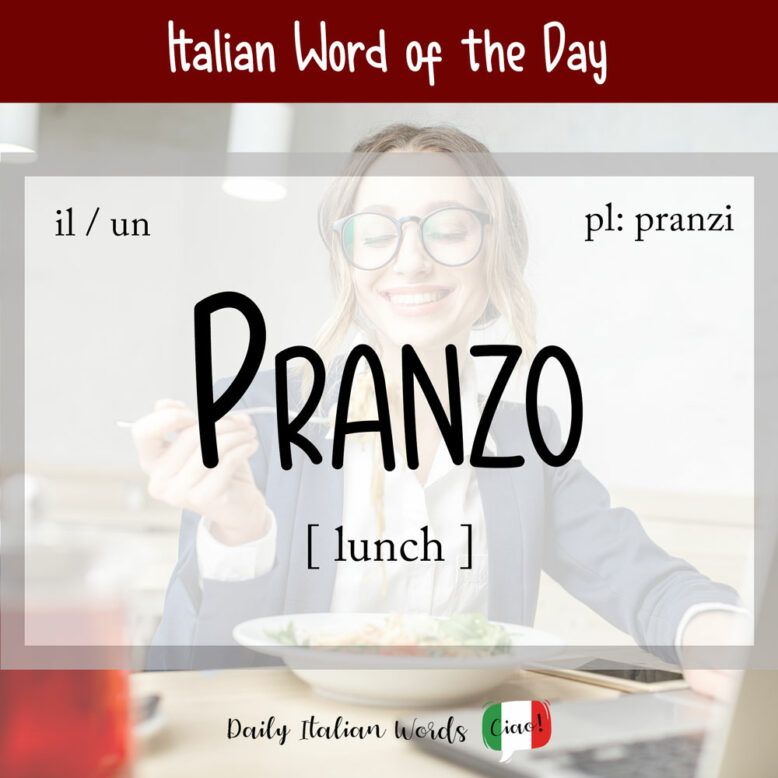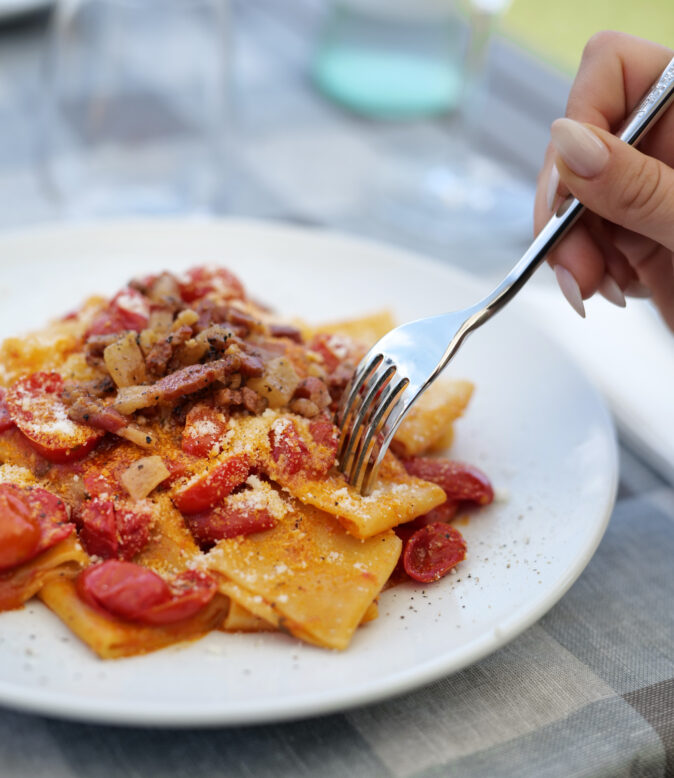Today we’re going to be discussing the meal that comes between colazione (breakfast) and cena (supper) which is, of course, pranzo (lunch)!

Pranzo is a masculine noun that comes directly from the Latin prandium of the same meaning. It takes the following definite and indefinite articles:
il pranzo
the lunch
un pranzo
a lunch
i pranzi
the lunches
dei pranzi
(some) lunches
In Italy, pranzo is usually served between 12:30 and 2:00pm, but most Italians are ready to eat by around 1pm. Those who aren’t in a hurry to return to work may easily dedicate an hour to lunch, either at home or in a public place serving food such as a pizzeria or bar.
Non bisogna saltare il pranzo. Fa male al nostro corpo.
We mustn’t skip lunch. It’s bad for our bodies.
A proper pranzo in Italy is always a complete savoury meal, consisting of a variety of vegetables, meat and carbohydrates. For example, whenever we visit my suocera (mother-in-law) for lunch, she always serves us a primo (first course) of pasta, followed by a secondo (second course) of meat, and finally a contorno (side dish) of vegetables or salad.
These days, however, it is just as common for an Italian to have only a primo or secondo, or even just a quick panino (sandwich) on the go, especially if they are in a rush.

In order to say “to have lunch” in Italian, you need to use the verb fare (to do / make) with pranzo, not avere (to have). Alternatively you can use the single verb pranzare.
Di solito faccio pranzo verso l’una.
I usually have lunch around 1pm.
Pranzetto, with the diminutive -etto ending, refers to a quick meal or a light lunch.
A pranzo al sacco (lit. lunch in a bag), on the other hand, is what Italians would call a packed lunch. It refers to the kind of lunch you would take to school or on an outing such as a picnic.
Heather Broster is a graduate with honours in linguistics from the University of Western Ontario. She is an aspiring polyglot, proficient in English and Italian, as well as Japanese, Welsh, and French to varying degrees of fluency. Originally from Toronto, Heather has resided in various countries, notably Italy for a period of six years. Her primary focus lies in the fields of language acquisition, education, and bilingual instruction.


